
Cracked concrete is a common frustration for homeowners. While hairline concrete cracking is normal and expected—even with a new concrete installation—older slabs will eventually form more plentiful, longer cracks that drive some homeowners crazy.
As discussed in my previous article, Concrete Conundrum: What to Do with Aging Slabs, you have a variety of options for repairing, resurfacing or replacing worn-out concrete slabs. But the most attractive, on-trend solution is to simply cover it up with a beautiful paver design. While not cheap, this approach creates a unique and custom look and requires the least maintenance.
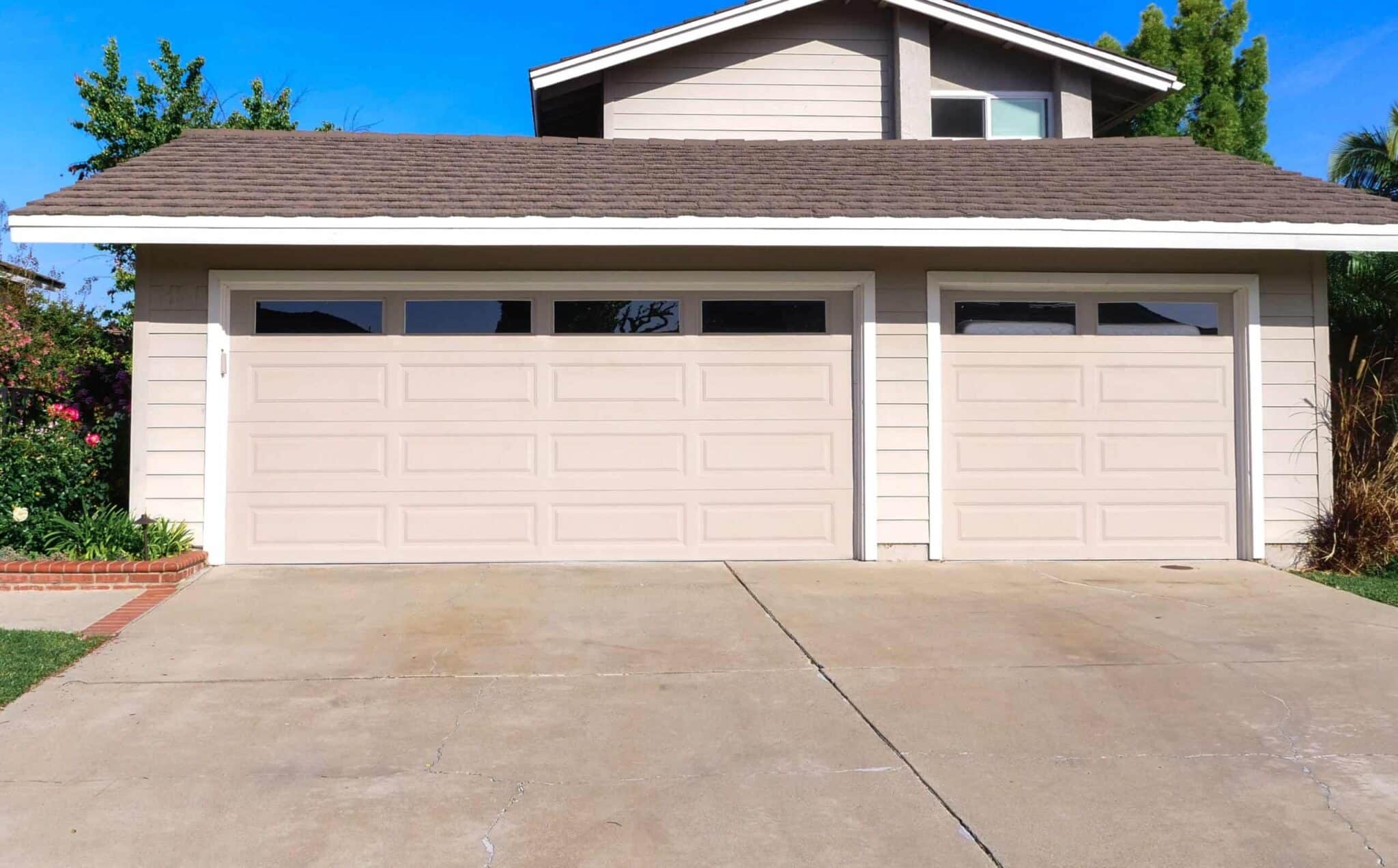
According to Mike Reedy, owner of Quality Built Exteriors, you can install pavers as long as your old concrete slab is still in good condition—yes, I know I just said this is for covering an unattractive slab, but it has to be structurally sound. It’s no problem if you have thinner cracks, stains, discoloration, etc., like in the driveway shown above. But this won’t work if your driveway, sidewalk or patio is crumbling, splitting in large pieces or has elevation/grading issues.
Best of all, this is an economical way to get a paver patio/driveway:
“When starting from scratch, paver projects can cost a lot more than installing a basic concrete slab, because pavers still need to be laid on a hard, flat surface. That means you are normally having to pay for the paver installation AND creating that base surface,” Mike said. “But if you already have a slab that can be used for the base, the project becomes more affordable.”
In fact, Mike had this done at his own home just a few months ago, covering his cracked concrete driveway. Check out this amazing before and after:

Pavers come in several price ranges, from basic to luxury and everything in between, depending on the materials chosen. Homeowners can incorporate custom designs, shapes, textures, patterns and color schemes to really make their home’s exterior pop.
“Pavers are usually chosen when the homeowner wants a custom look that will last a long time and require minimal maintenance,” Mike said. “Think about it, there are still roads in use today in Rome that were made thousands of years ago using pavers!”
Unlike concrete, pavers are tough and don’t easily crack. They are stain-resistant and virtually maintenance free. If stains or tire marks do occur, pavers can quickly be pressure washed. And for the rare paver that gets damaged, you can simply replace it with a new one (always order extras!).
If you’re considering using pavers to cover an existing concrete slab at your home, or for any exterior project, check out these fun design ideas:
Colorful Borders and Blends
Color variation is a great way to add interest to a paver project. Even budget pavers come in different colors. Make use of a few different shades in the same color family, which can be as simple blending them together randomly as they are installed, like in Mike’s driveway above. Another option is to choose border pavers in a different color than the center area.
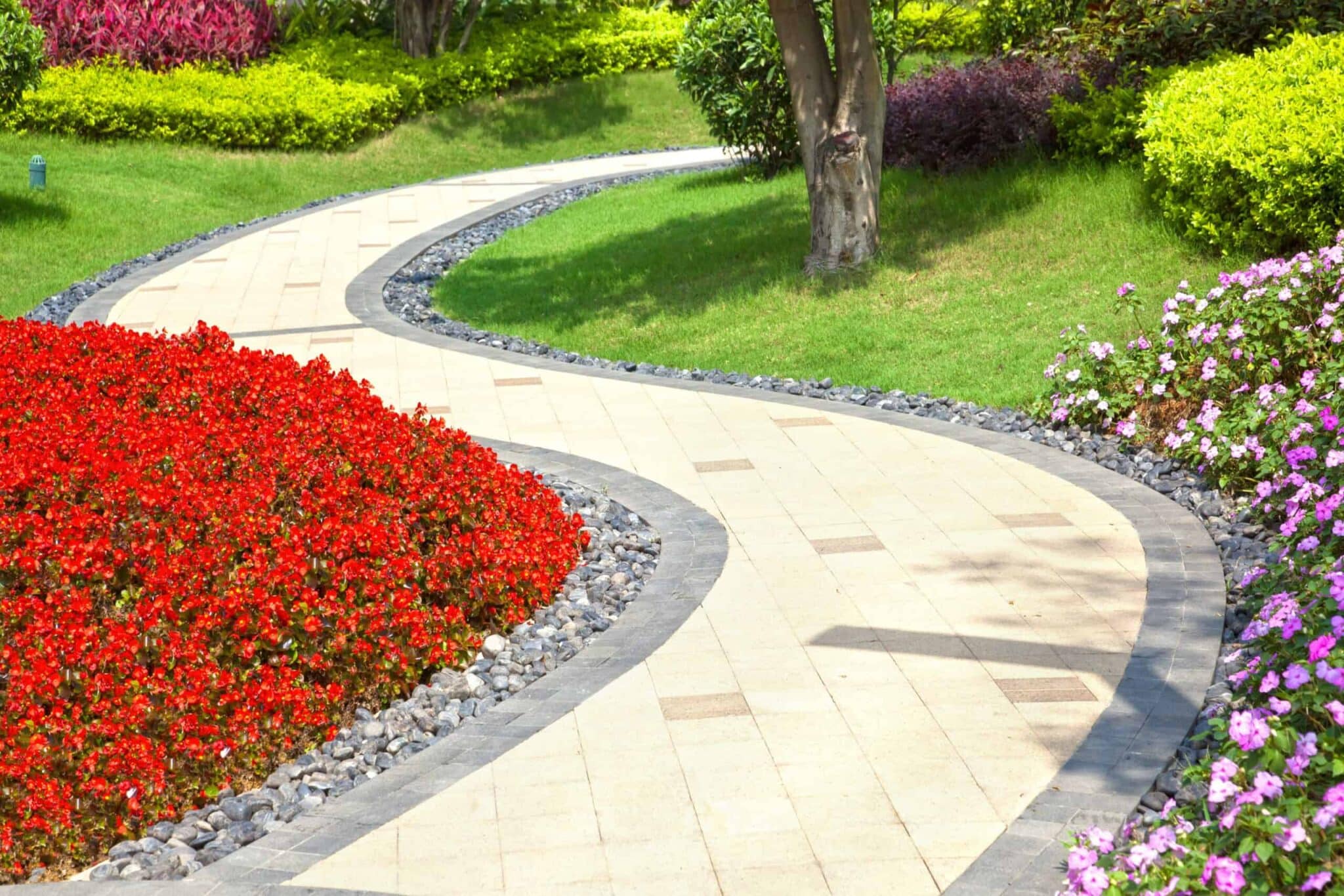
Or get really creative and mix together areas of totally different shapes and sizes into different areas, just make sure again that they are in the same color family.
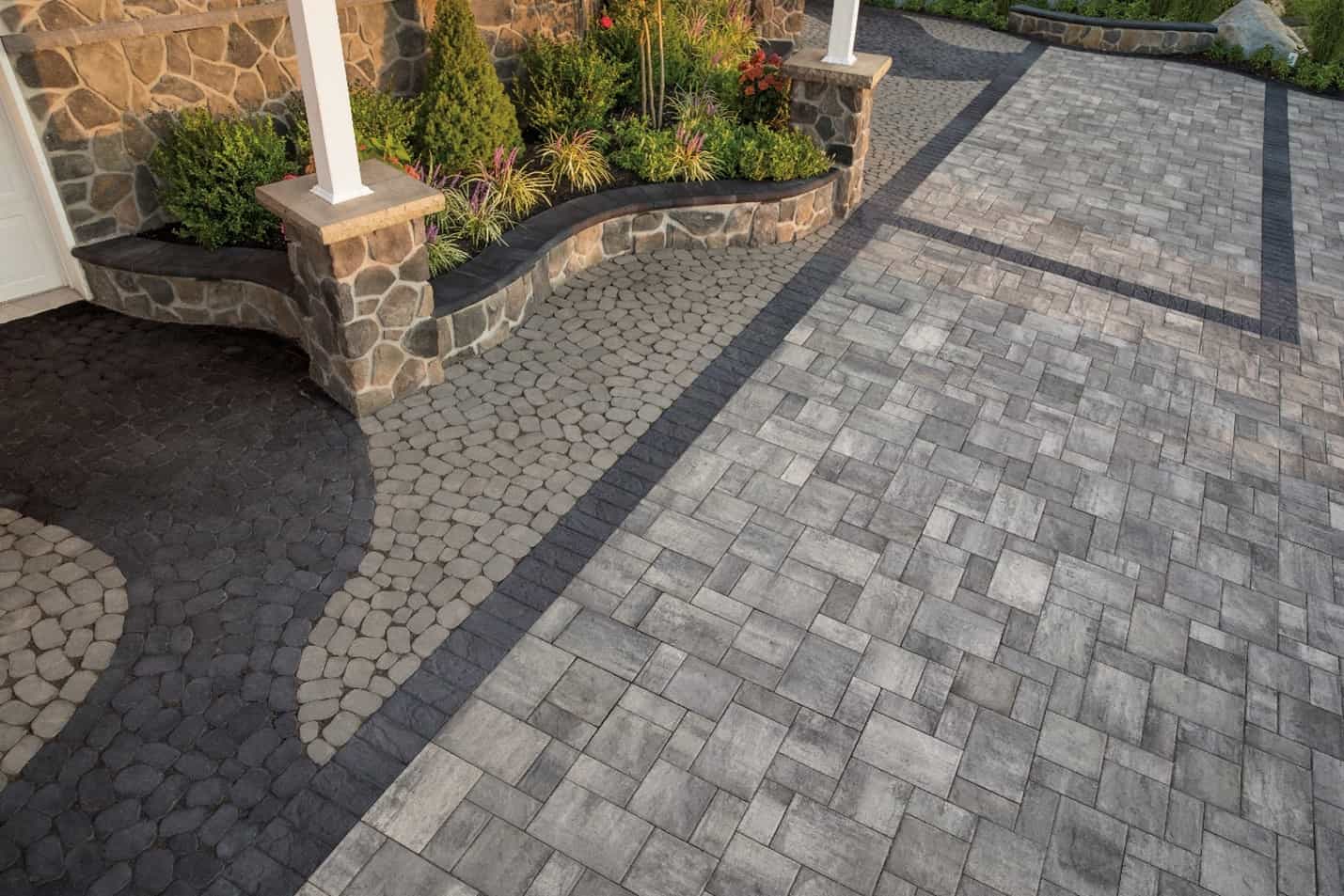
Pattern Play
The size, shape, pattern and layout of your pavers can make a world of difference to the overall appearance of the space. Instead of a simple block pattern, why not rotate the pavers into a herringbone design?
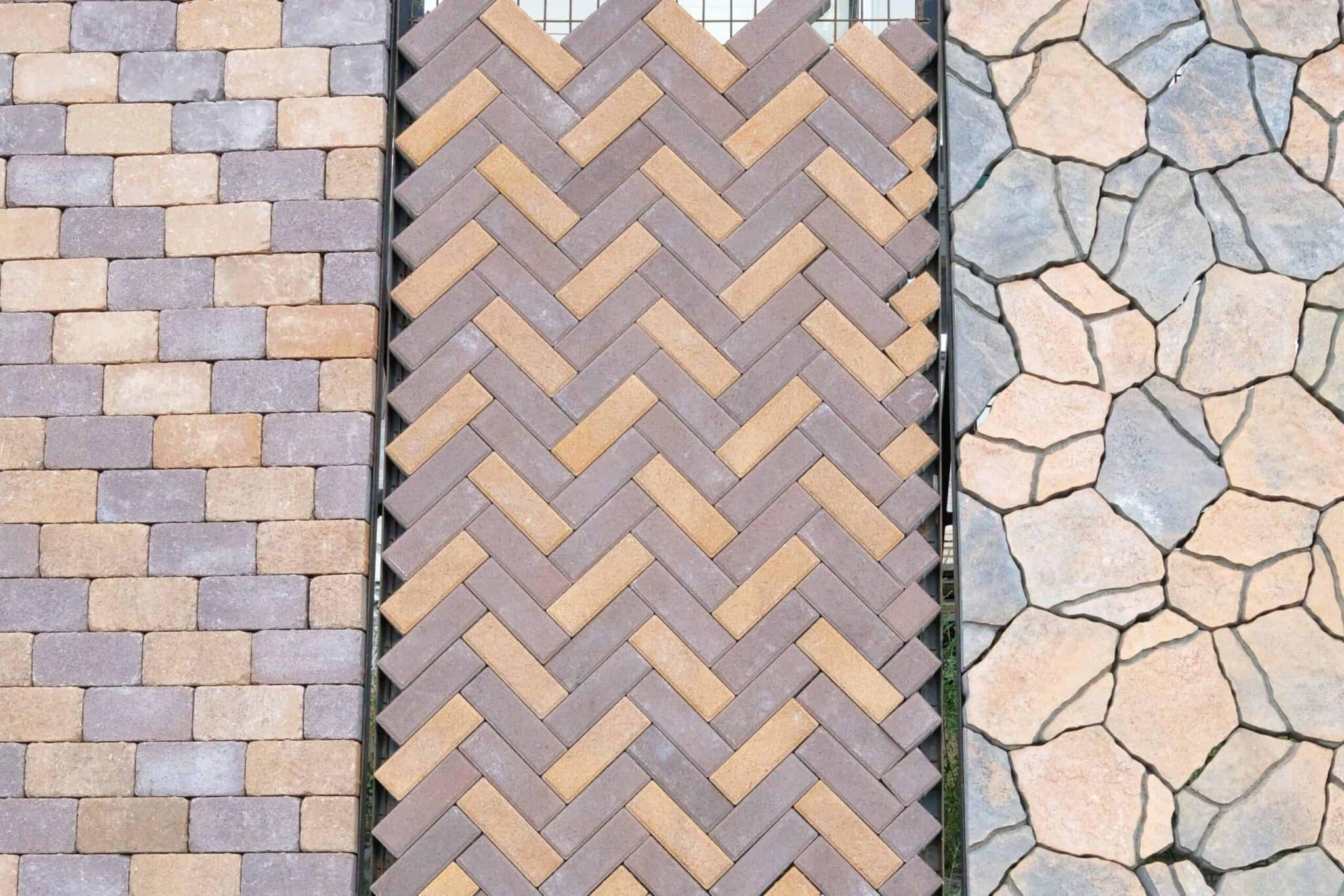
If your space is round, has a central focal point (such as a dining table or fountain), or has trees that you’d like to keep, consider installing pavers in a circular pattern to spotlight your centerpiece.
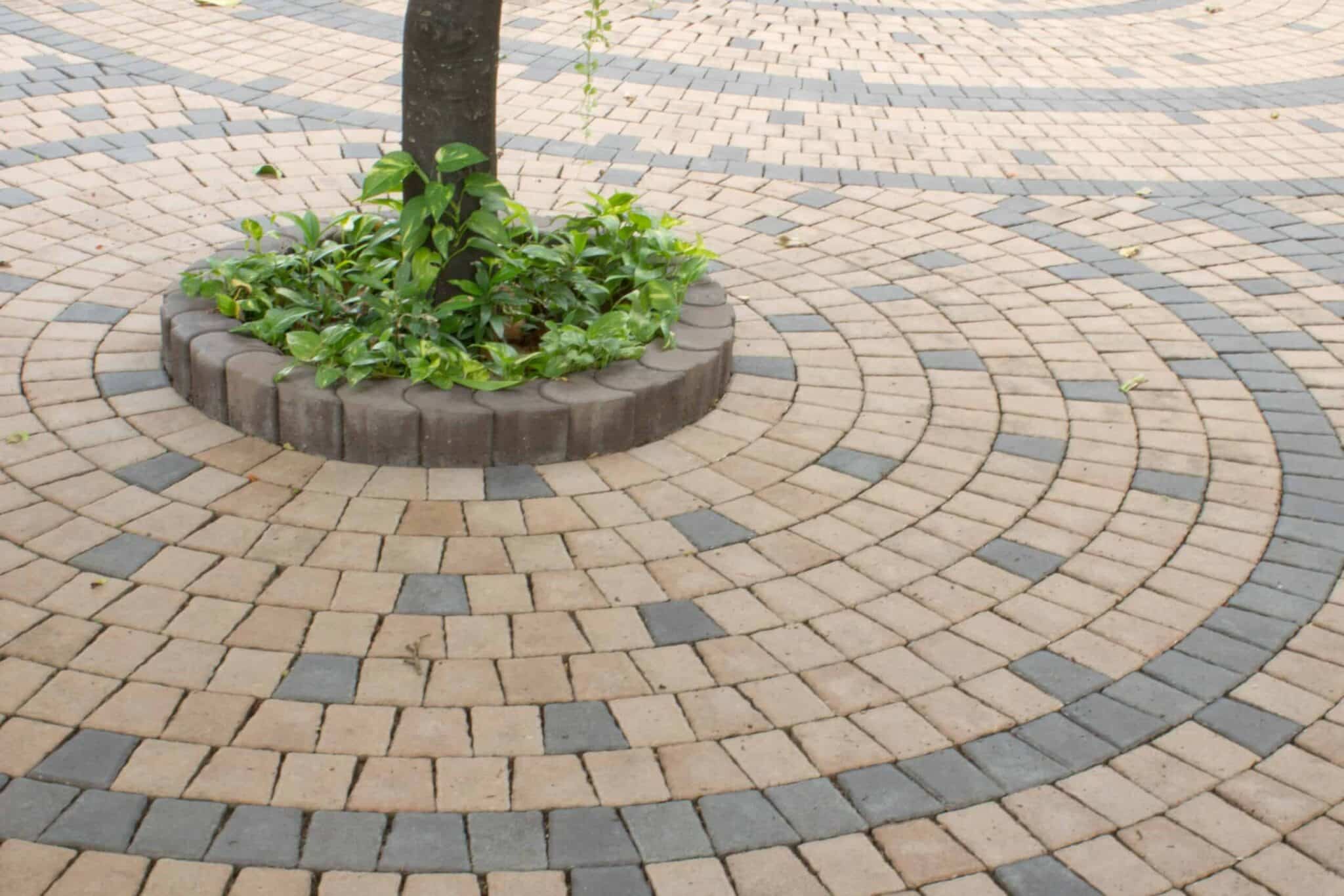
Completely Custom
Maybe you want a truly distinctive look that no one else in your neighborhood has. Consider having a custom design built right into your paver layout. It could be a monogram (though be careful on that one when it comes to home resale), compass, fleur-de-lis, even a depiction of your dog! The options for this truly are endless.
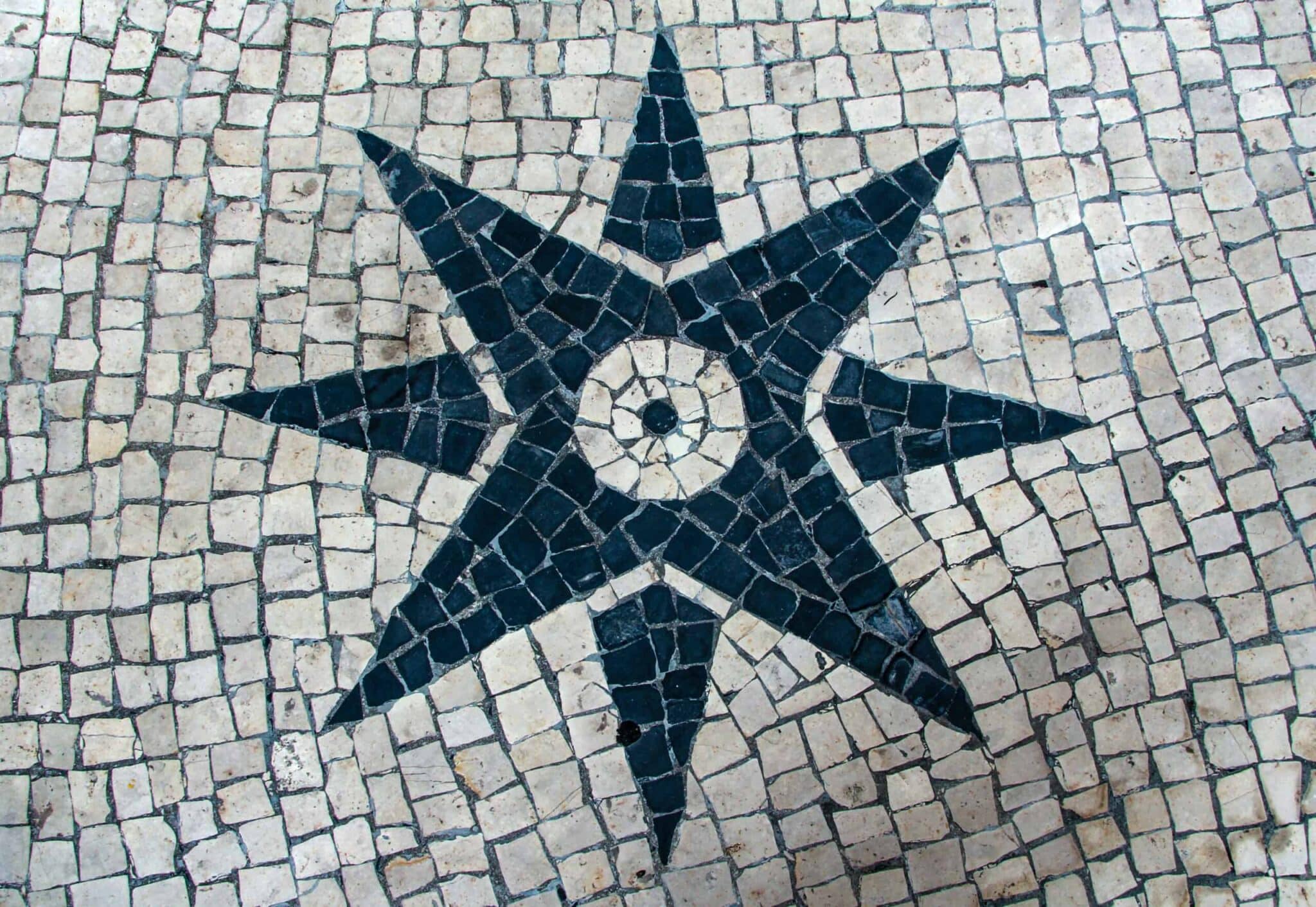
Texture To Taste
Rough & Rugged? Smooth & Sophisticated? No matter what look you’re after, there are pavers for that! Pavers come in many different textures and materials, making almost any idea possible.
If you want a more rustic look, then rough-cut stone or cobblestone pavers may be just what you need. Prefer a more traditional feel? Brick pavers lend a refined yet laid back appearance to outdoor areas.
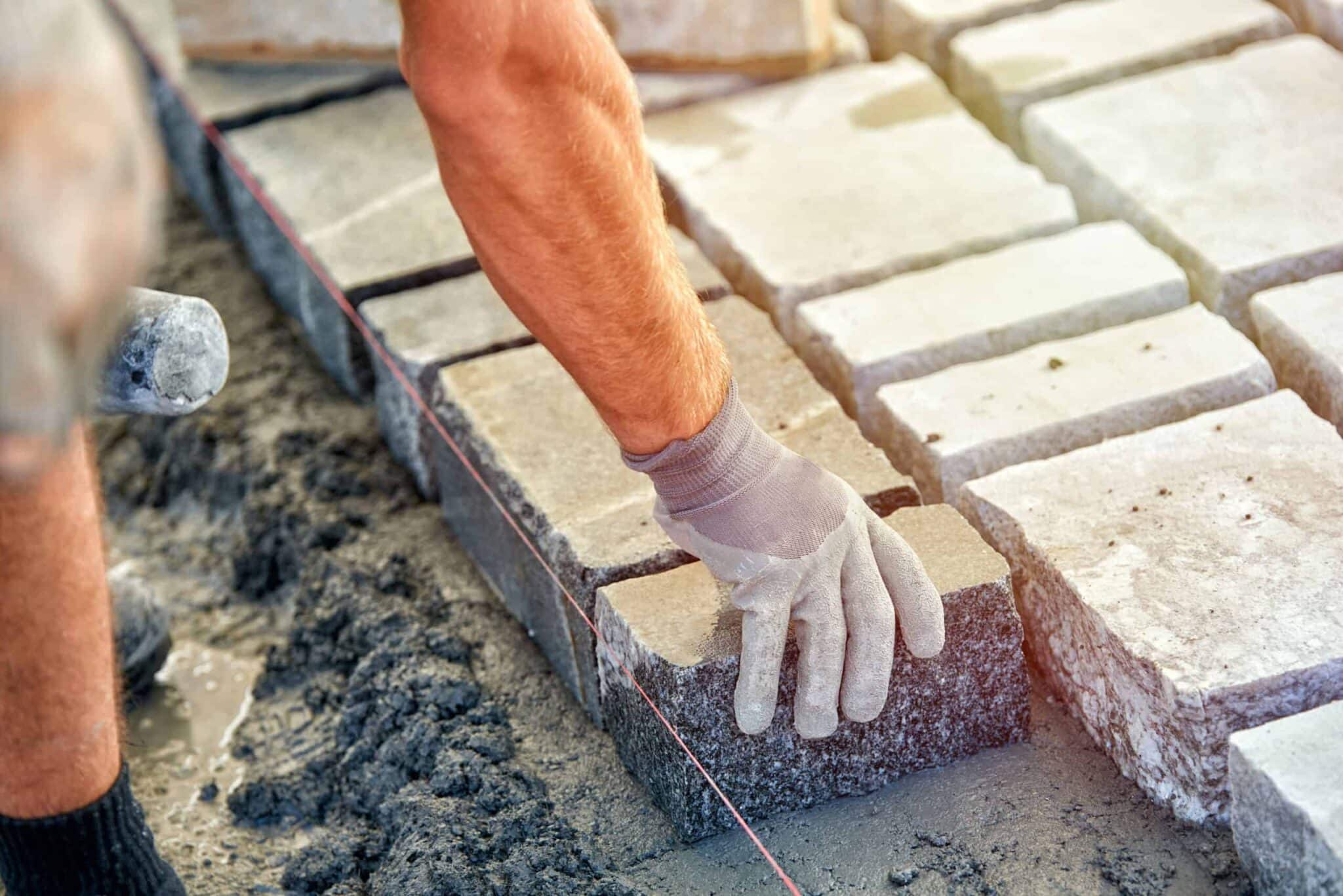
Paver Places
From pools to patios or driveways to walkways, anywhere you can put concrete, you can add pavers. They’re often seen as luxury treatments because they are so highly customizable.
If you plan to install pavers on a driveway, golf cart path or other area that will have vehicular traffic, make sure to discuss this with your contractor in advance. Surfaces that will be driven on require thicker pavers and might also need stabilization of the concrete slab underneath.
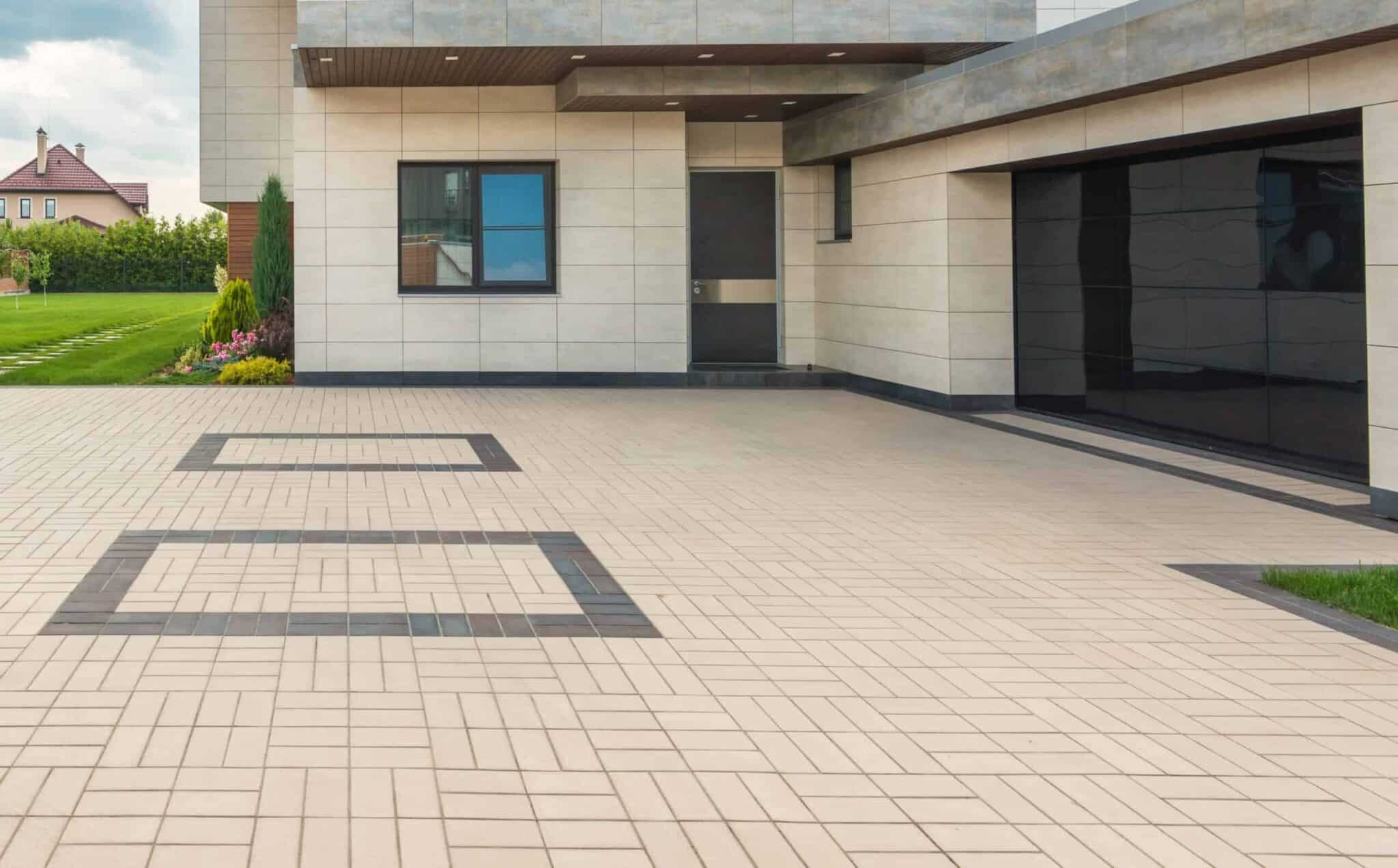
Installing pavers, especially in pool areas or in spaces with steep elevations or drainage issues, can be tricky. It is not your typical Do-It-Yourself project, as it requires skill and specialized tools to do the job correctly. Pavers are also heavy and cumbersome to work with. Having a team of professionals do the job will ensure you don’t run into future issues with drainage or areas that shift or sink.

If these ideas leave you wanting to cover your old concrete with pavers, give Quality Built Exteriors a call today to schedule a free estimate.

